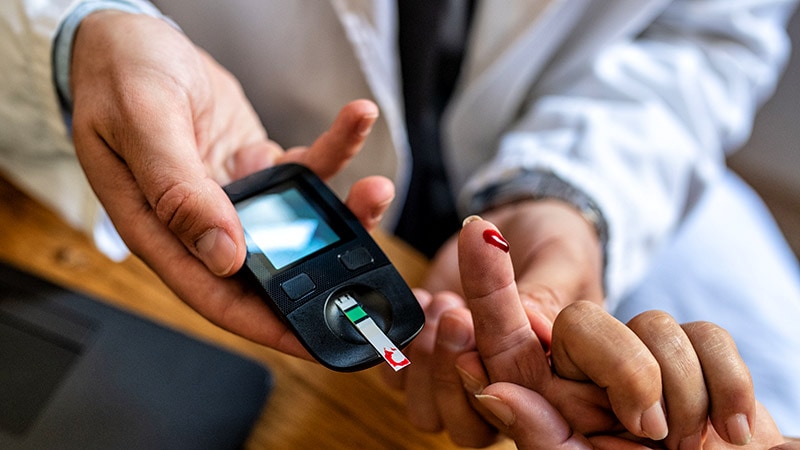Takeaway
- Risk of experiencing episodes of clinical hypoglycaemia was significantly higher among patients with type 2 diabetes (T2DM) on sulphonylureas or insulin with low level of HbA1c (<53 mmol/mol) in comparison to those with more optimal levels of HbA1c.
- Hypoglycaemia and mortality risk were higher among patients receiving insulin compared with sulphonylureas.
Why this matters
- Hypoglycaemia is a major side effect of intensive glucose-lowering treatment and is commonly associated with falls, fractures, and road traffic accidents.
- Findings support the need for reviewing glycaemic targets and the intensities of treatment in patients with low HbA1c prescribed insulins or sulphonylureas to reduce hypoglycaemia risk.
Study design
- Retrospective cohort study of 18,628 patients (insulin, n=6788; sulphonylureas, n=11,840) with T2DM.
- Funding: Queen Mary University of London.
Key results
- 1315 patients (insulin, n=675; sulphonylureas, n=640) experienced an episode of hypoglycaemia and 1037 deaths were recorded.
- Hypoglycaemia was more common among patients with a HbA1c level below 53 mmol/mol in the insulin (aHR, 1.26; 95% CI, 0.97-1.63) and sulphonylurea group (aHR, 1.54; 95% CI, 1.27-1.87) vs patients with an elevated level of HbA1c.
- All-cause mortality was higher among patients with low HbA1c in the insulin (aHR, 1.54; 95% CI, 1.15-2.07) and sulphonylurea groups (aHR, 1.42; 95% CI, 1.11-1.81).
- Patients receiving insulin and having a higher level of HbA1c (≥86 mmol/mol) showed an increased risk for hypoglycaemia (HR, 2.22; 95% CI, 1.51-3.26) vs sulphonylurea group.
Limitations
- Only a single baseline HbA1c measurement was included.
References
References



